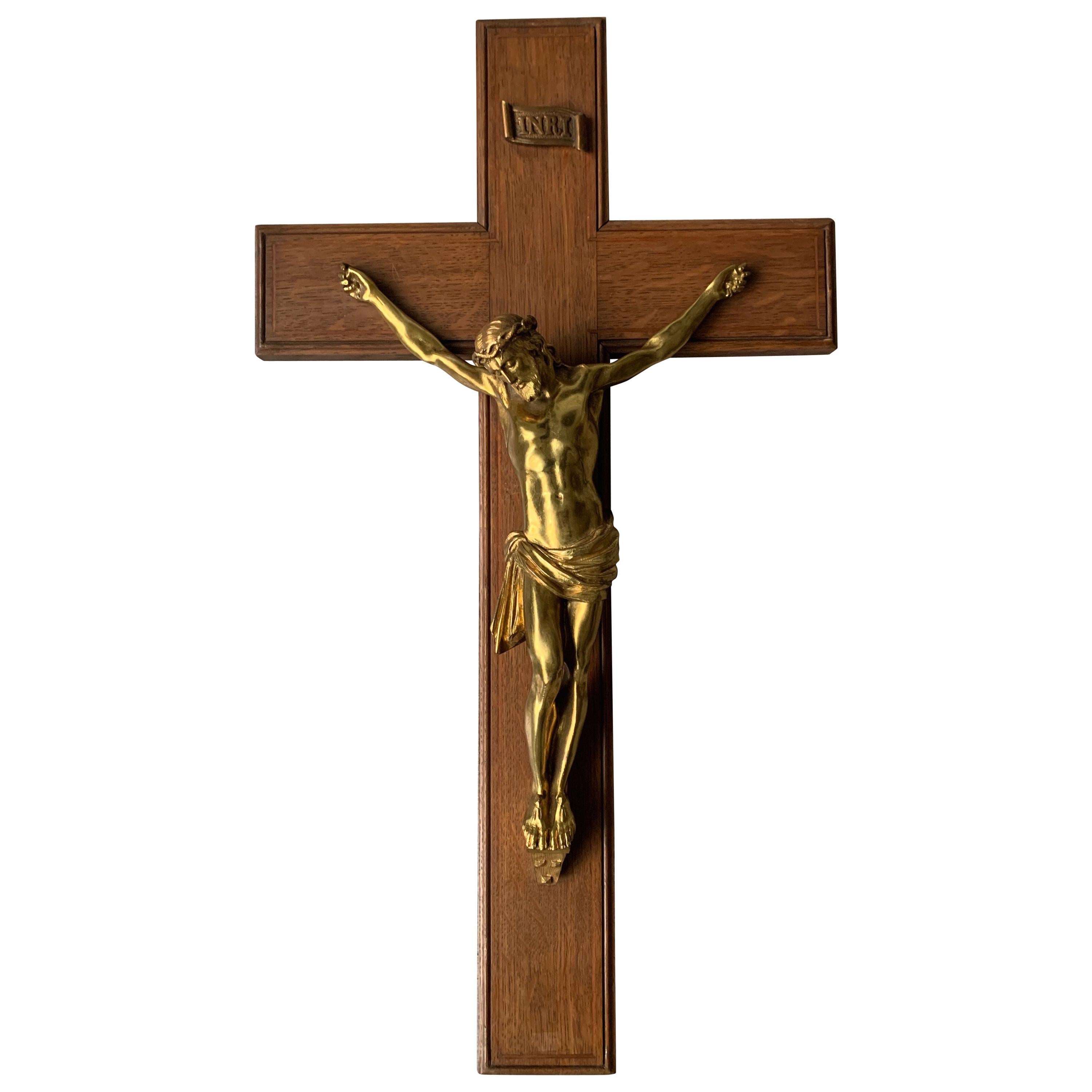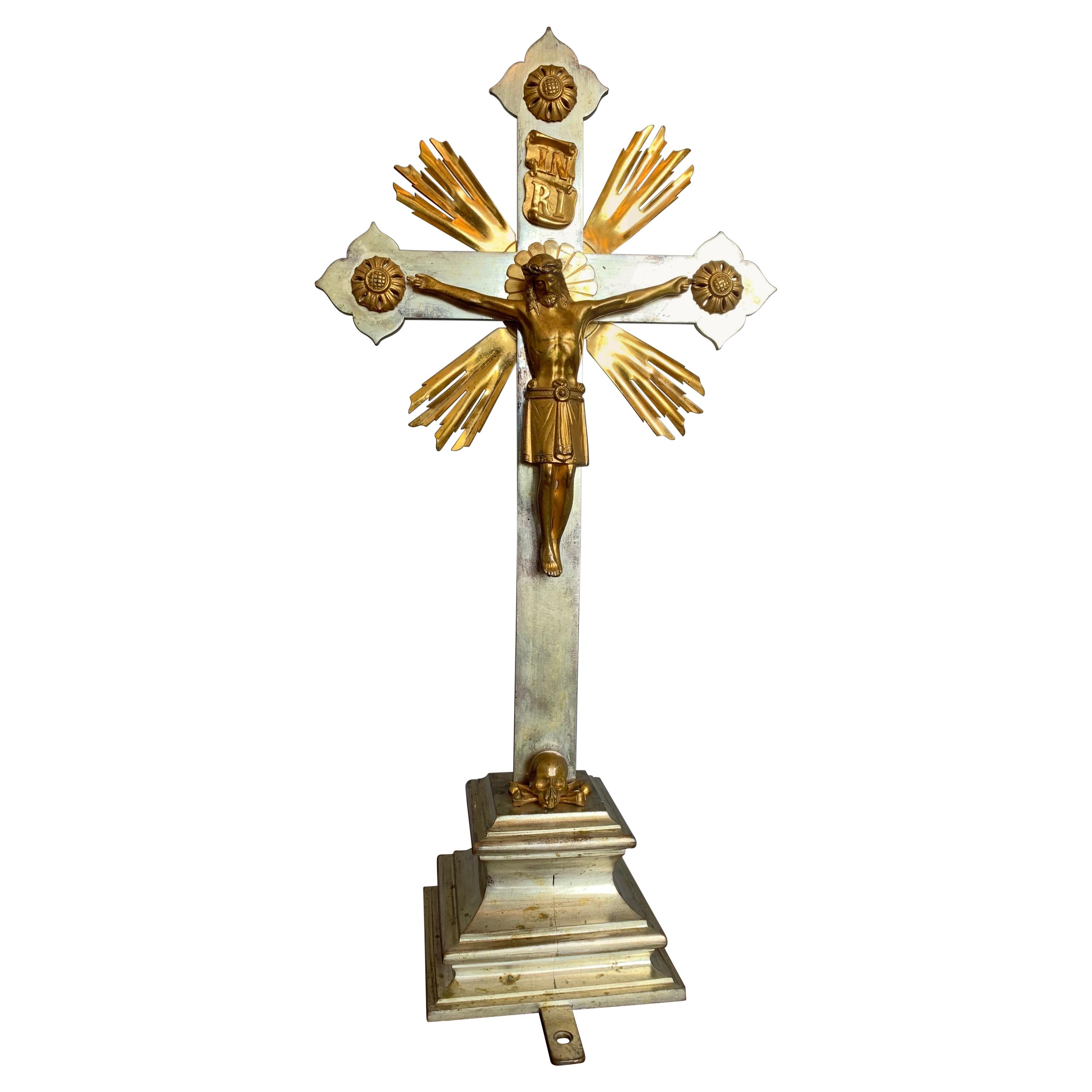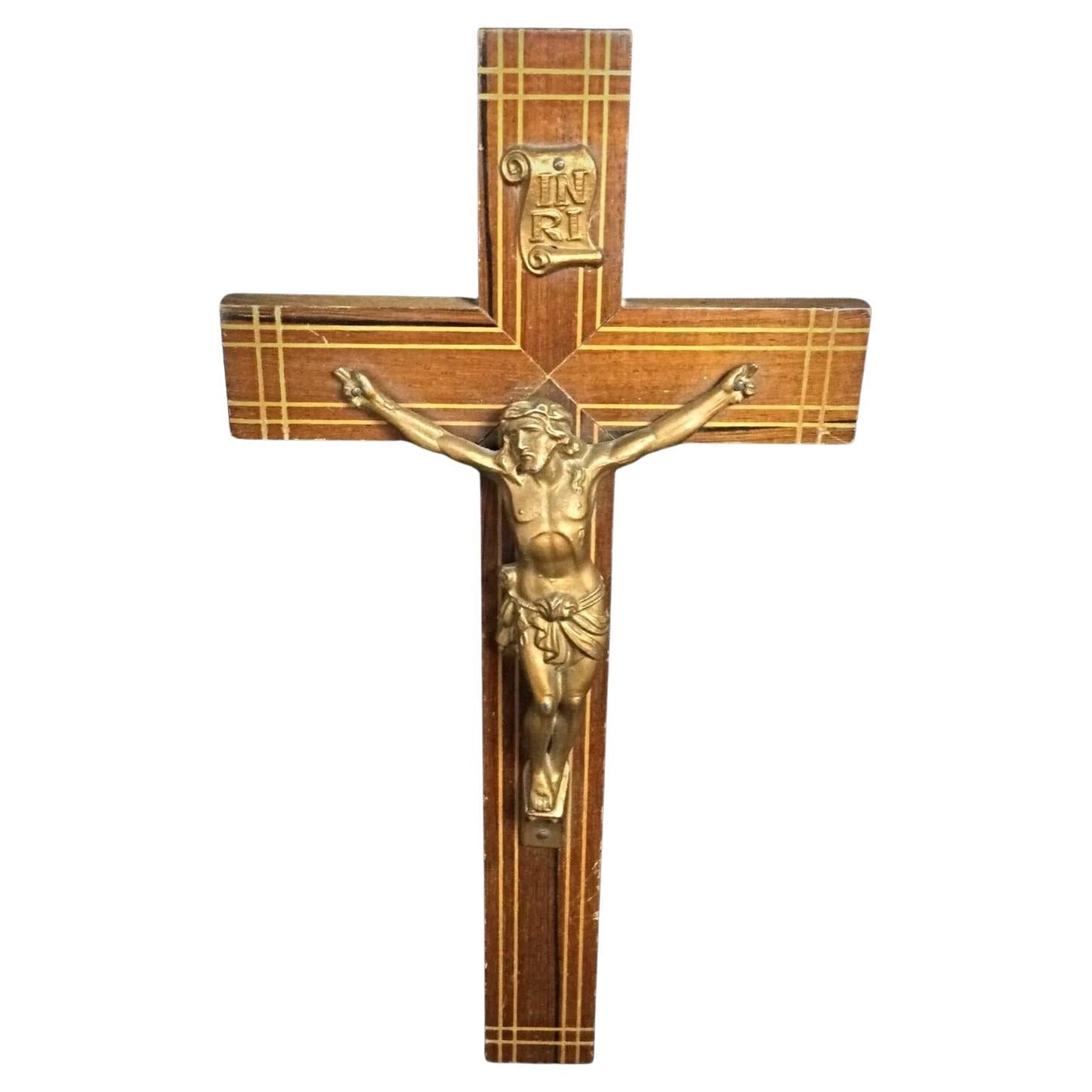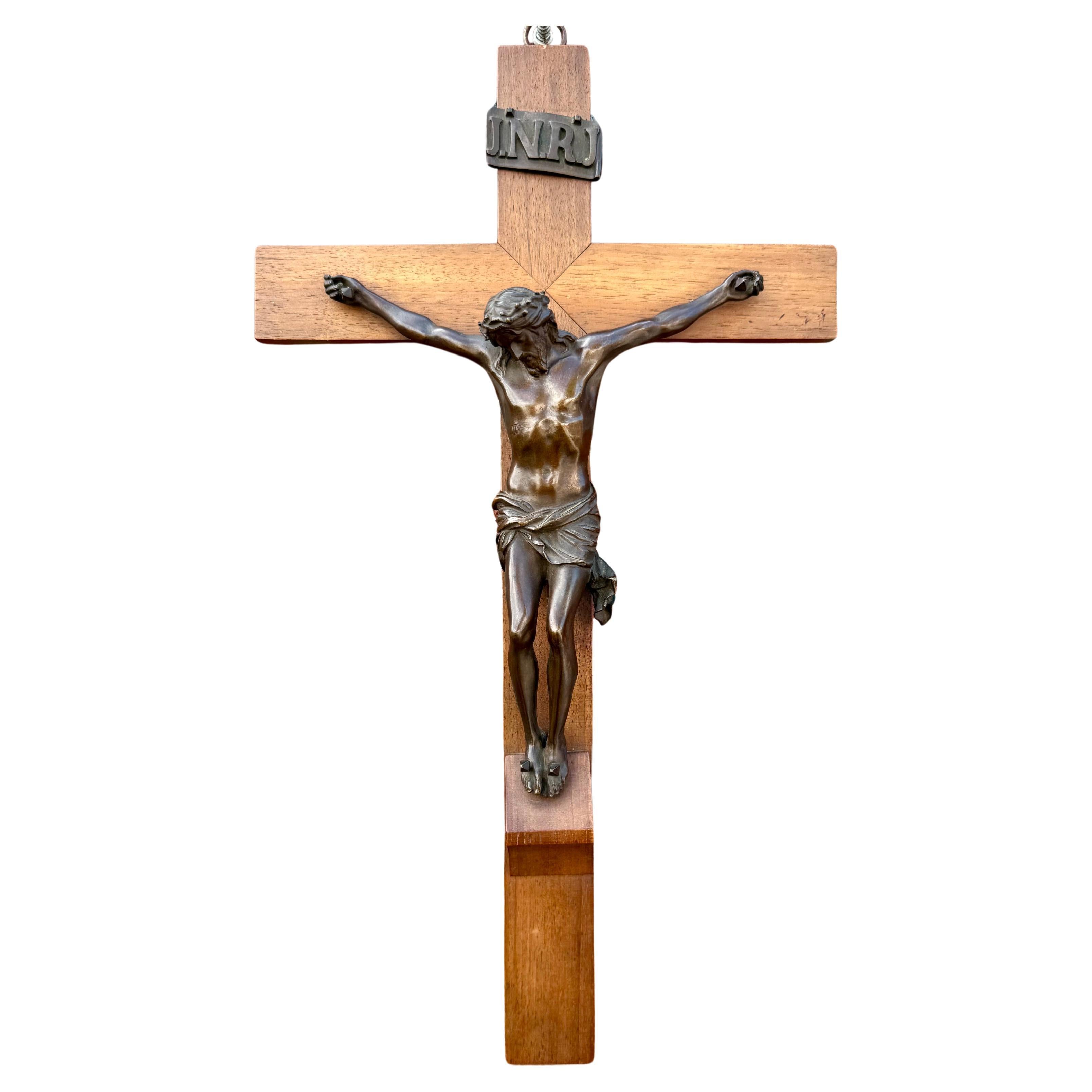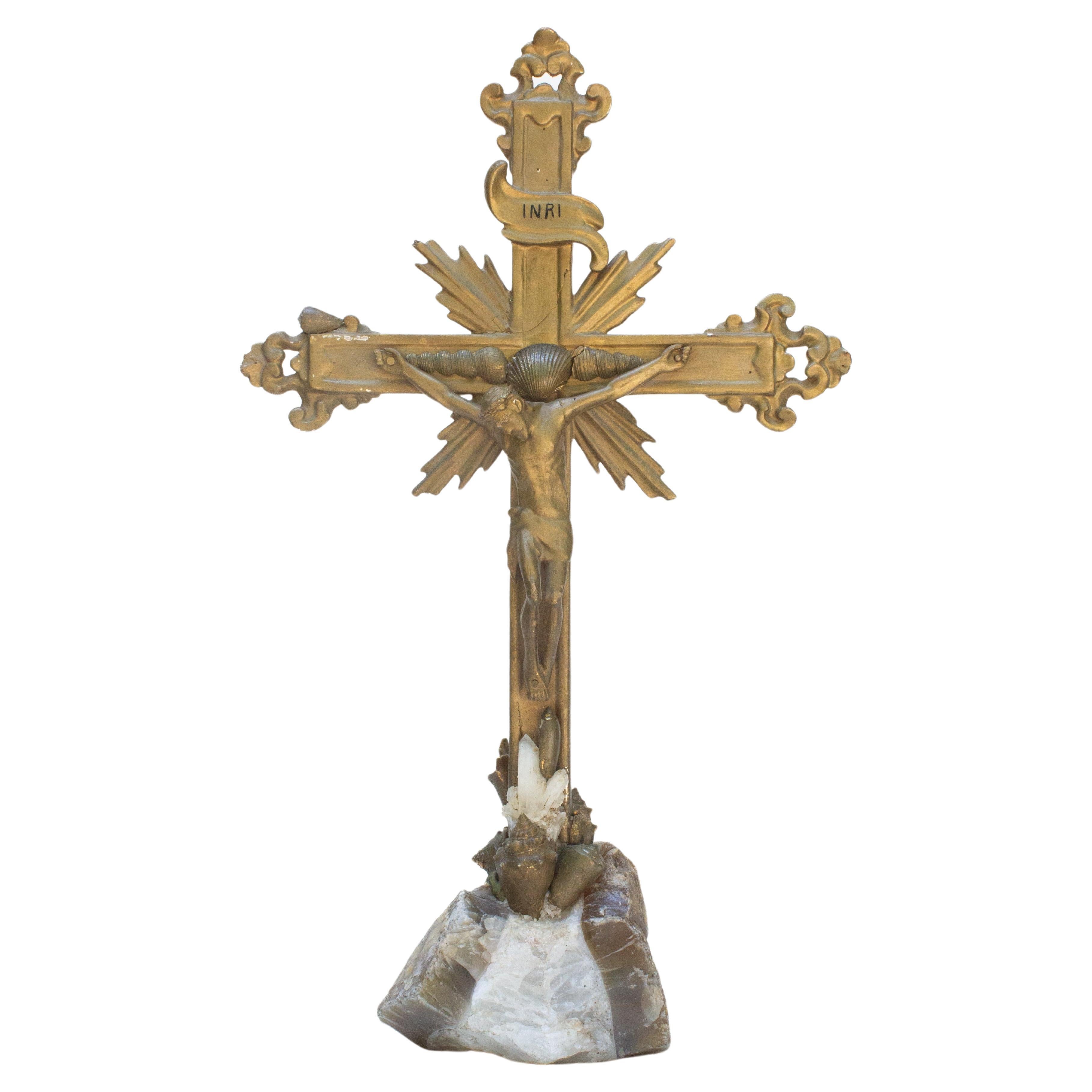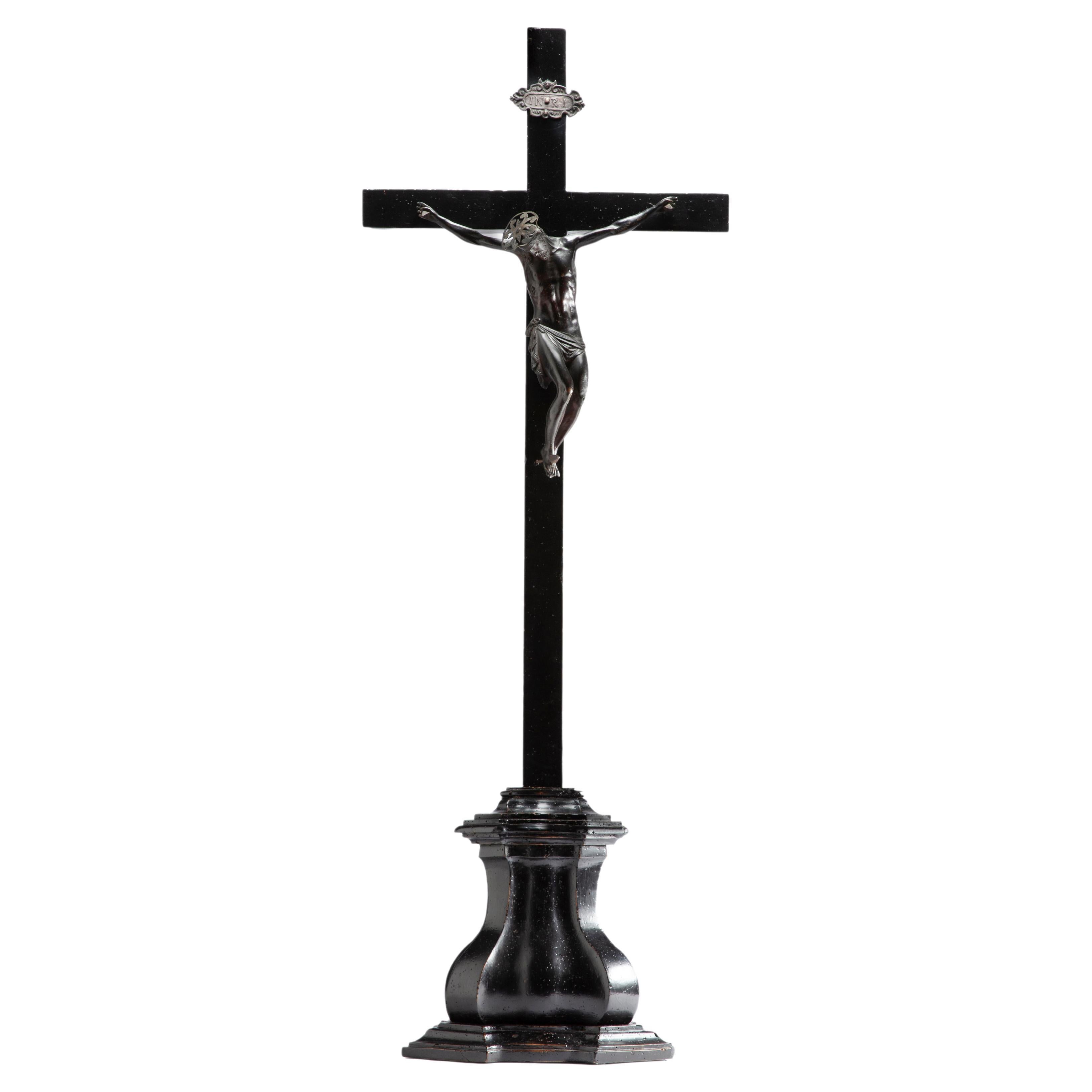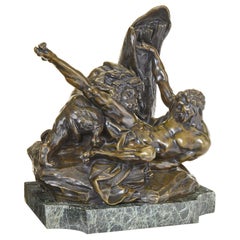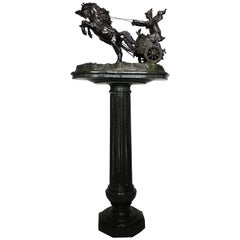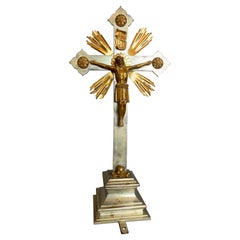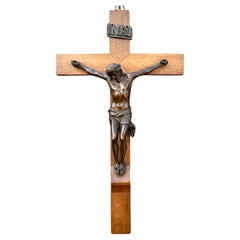Items Similar to Large 19th Century Patinated Bronze & Giltwood Carved Crucifix - Siegfried & Roy
Video Loading
Want more images or videos?
Request additional images or videos from the seller
1 of 14
Large 19th Century Patinated Bronze & Giltwood Carved Crucifix - Siegfried & Roy
$12,950
$18,45029% Off
£9,767.65
£13,916.0729% Off
€11,281.73
€16,073.1929% Off
CA$18,143.84
CA$25,849.7229% Off
A$20,174.91
A$28,743.4129% Off
CHF 10,561.93
CHF 15,047.6929% Off
MX$246,440.31
MX$351,106.0829% Off
NOK 132,721.06
NOK 189,089.0829% Off
SEK 124,850.75
SEK 177,876.1729% Off
DKK 84,217.32
DKK 119,985.3029% Off
About the Item
A Large and Impressive Continental 19th Century Patinated Bronze and Giltwood Carved Crucifix Former property of Siegfried & Roy, the renown German-American magicians and entertainers who performed together as 'Siegfried & Roy'. The later giltwood carved cross frame with a monstrance sunburst, a symbol for the holy host, surmounted with a patinated bronze figure of Jesus Christ and the "INRI" bronze plaque above. Signed on back, but illegible. The bronze probably French. Circa: 1880-1890.
Siegfried Fischbacher (June 13, 1939 - January 13, 2021) and Roy Horn (born Uwe Ludwig Horn; October 3, 1944 - May 8, 2020) Starting in 1990, they headlined a show at The Mirage casino resort and were best known for their use of white lions and white tigers in their acts.
Overall height: 41 3/4 inches (106 cm)
Overall width: 25 1/2 inches (64.8 cm)
Overall depth: 6 1/2 inches (16.5 cm)
Christ height: 25 inches (63.5 cm)
Christ width: 18 1/8 inches (46.1 cm)
Christ depth: 5 inches (12.7 cm)
- Dimensions:Height: 41.75 in (106.05 cm)Width: 25.5 in (64.77 cm)Depth: 6.5 in (16.51 cm)
- Style:Baroque (In the Style Of)
- Materials and Techniques:
- Place of Origin:
- Period:
- Date of Manufacture:Circa 1880-1890
- Condition:Refinished. Wear consistent with age and use. Minor losses. Minor fading. A truly impressive crucifix, great original patina and nice details. A heavy piece. The wooden cross appears to be later with later gilding, probably 20th century.
- Seller Location:Los Angeles, CA
- Reference Number:Seller: Ref.: A2623 - Lot 114171stDibs: LU1796229066282
About the Seller
5.0
Vetted Professional Seller
Every seller passes strict standards for authenticity and reliability
Established in 1982
1stDibs seller since 2016
135 sales on 1stDibs
Typical response time: 1 hour
- ShippingRetrieving quote...Shipping from: Los Angeles, CA
- Return Policy
Authenticity Guarantee
In the unlikely event there’s an issue with an item’s authenticity, contact us within 1 year for a full refund. DetailsMoney-Back Guarantee
If your item is not as described, is damaged in transit, or does not arrive, contact us within 7 days for a full refund. Details24-Hour Cancellation
You have a 24-hour grace period in which to reconsider your purchase, with no questions asked.Vetted Professional Sellers
Our world-class sellers must adhere to strict standards for service and quality, maintaining the integrity of our listings.Price-Match Guarantee
If you find that a seller listed the same item for a lower price elsewhere, we’ll match it.Trusted Global Delivery
Our best-in-class carrier network provides specialized shipping options worldwide, including custom delivery.More From This Seller
View AllOver-Lifesize Patinated Bronze Greco Roman Standing Half-Figure of Andromeda
Located in Los Angeles, CA
A fine over-lifesize patinated bronze Greco roman revival style standing half-figure of Andromeda, probably French, probably late 19th century or early 20th century. The heavily fine...
Category
Antique Late 19th Century French Greco Roman Figurative Sculptures
Materials
Bronze
Fine French 19th Century Bronze Figure of "Milo of Croton & Lion" After Falconet
By Étienne Maurice Falconet
Located in Los Angeles, CA
A very fine French 19th century Patinated bronze Figure of "Milo of Croton and the Lion" after the marble sculpture of Milon de Crotone by renown French...
Category
Antique 19th Century French Baroque Figurative Sculptures
Materials
Marble, Bronze
$12,450 Sale Price
32% Off
Hispano-Portuguese 19th Century Oil Painting on Board, Icon "The Crucifixion"
Located in Los Angeles, CA
An Hispano-Portuguese 19th century oil on board depiction of "The Crucifixion". The baroque icon style painting depicting the Crucifixion of Jesus Christ outside the city walls of Jerusalem, north of Mount Zion...
Category
Antique 19th Century Spanish Baroque Revival Paintings
Materials
Wood
$9,450 Sale Price
36% Off
Italian 19th Century Bronze Sculpture Group of a Two-Horse Roman Chariot & Rider
Located in Los Angeles, CA
A fine and large Italian 19th century Greco Roman style brown patinated bronze sculpture group of a two-horse Roman Chariot and rider in a dark patina, raised on a fitted Verde d'alp...
Category
Antique 19th Century Italian Greco Roman Figurative Sculptures
Materials
Marble, Bronze
$12,950 Sale Price
22% Off
A Large Patinated and Parcel-Gilt-Bronze Thai Thepphanom Kneeling Angel Buddha
Located in Los Angeles, CA
A Large Patinated Bronze and Parcel-Gilt-Bronze Decorative Figure of a Thai Thepphanom Kneeling Angel Buddha. The impressive sculpture of a kneeling angel Buddha, kneeling on both kn...
Category
Late 20th Century Thai Other Sculptures and Carvings
Materials
Bronze
A French 19th Century Bronze Sculpture Titled "La Sécurité" Eugène Delaplanche
By Eugène Delaplanche
Located in Los Angeles, CA
A very fine French 19th century brown and parcel-gilt patinated bronze sculpture titled "La Sécurité" (The Security - Protection) after a model by Eugène Delaplanche (French, 1836–1891). Depicting a sitting young Maiden in a gilt-decorated armored suit and helmet, a lion skin on her back, holding a resting child on her arm. Raised on Rouge-Royal marble plinth inscribed "La Sécurité - Par E. Delaplanche - Salon des Beaux-Arts de Paris". Signed: E. Delaplanche and stamped with the importer's seal - Alberto Vignes y Ca - Buenos Aires, circa 1890.
Measures: Height: 28 3/4 inches (60.3 cm).
Width: 16 inches (40.7 cm).
Depth: 14 inches (35.6 cm).
Eugène Delaplanche (February 28, 1836 – January 10, 1891) was a French sculptor, born at Belleville (Seine).
He was a pupil of Duret, gained the Prix de Rome in 1864 (spending 1864-67 at the Villa Medici in Rome) and the medal of honor in 1878. His "Messenger of Love" (1874), "Aurora" (1878), and the "Virgin of the Lillies" (1884), are in the Luxembourg. Other works by him are "Music - La Musique" (1878, Paris Opera House), called his masterpiece; "Eve After the Fall" (1869); "Maternal Instruction" (1875, Square of Sainte-Clothilde, Paris). He is also noted for his decorations in relief on vases of Haviland faience. His best work is naturalistic, but at the same time dignified and simple in line and shows sound mastery of technique. He is represented by 15 works in the Glyptothek, Copenhagen and in many other French museums and in churches.
This sculpture of La Sécurité is after his 1884 sculptures...
Category
Antique Late 19th Century French Belle Époque Figurative Sculptures
Materials
Marble, Bronze
$18,450 Sale Price
47% Off
You May Also Like
19th Century Great Quality Gilt Bronze Wall Crucifix on a Carved & Inlaid Cross
Located in Lisse, NL
Rare and finest Gilded bronze crucifix mounted on a oak cross.
The striking details on this highest quality bronze sculpture of Christ are second to none and the antique gilt finish...
Category
Antique Late 19th Century European Gothic Revival Figurative Sculptures
Materials
Bronze
Antique Gothic Revival Silvered Bronze Crucifix with a Gilt Bronze Corpus Christ
Located in Lisse, NL
Good size and impressive make, Gothic church altar crucifix.
This ornate and all hand-crafted, bronze table crucifix comes with a good quality made a...
Category
Early 20th Century French Gothic Revival Religious Items
Materials
Brass, Bronze
Antique Late 20th Century Wooden Crucifix with Spelter Corpus - 2Y306
Located in Bordeaux, FR
This beautiful crucifix from the late 20th century is crafted from wood with a spelter (regule) corpus, offering a striking representation of Christian religious symbolism. It makes ...
Category
Late 20th Century French Antiquities
Materials
Spelter
$193 Sale Price
55% Off
19th Century, Antique, Great Quality Bronze Wall Crucifix Signed: F. Barbedienne
By F. Barbedienne Foundry
Located in Lisse, NL
Rare and important bronze crucifix by the French ‘fondeur’ F. Barbedienne.
Ferdinand Barbedienne (1810-1892) does not need any further introduction, but that he also made this type...
Category
Antique Mid-19th Century French Gothic Wall-mounted Sculptures
Materials
Bronze
18th Century Italian Bronze-Gold Crucifix Mounted on a Crystal Geode
By Interi
Located in Dublin, Dalkey
18th century Italian bronze-gold crucifix with coordinating gold leaf shells and crystal points mounted on a crystal geode. The gold leaf shells adorn the crucifix and the base of th...
Category
Antique 18th Century Italian Rococo Mounted Objects
Materials
Quartz, Rock Crystal, Bronze, Gold Leaf
Crucifix, Bronze, iron, and wood, Lombardy, mid-17th century
Located in Milano, IT
Crucifix
Lombardy, mid-17th century
Bronze, iron, and wood
Sculpture: 33 cm height x 35 cm width x 10 cm depth at the knees;
Cross: 42.12 in height x 19.68 in width (107 cm x 50);
Ba...
Category
Antique Mid-17th Century Italian Baroque Figurative Sculptures
Materials
Bronze, Iron
More Ways To Browse
Large Bronze Cross
Crucifix Antique
Bronze Christ
Jesus Christ Sculpture
Antique Crosses Crucifixes
Carved Crucifix
French Crucifix
Large Crucifix
Antique Bronze Crucifix
Horns On Plaque
Framed Crucifix
Antique Monstrance
Used Monstrance
French Monstrance
German Crucifix
Bronze Jesus Plaque
Marble Well Head
Wood Carved Wings
